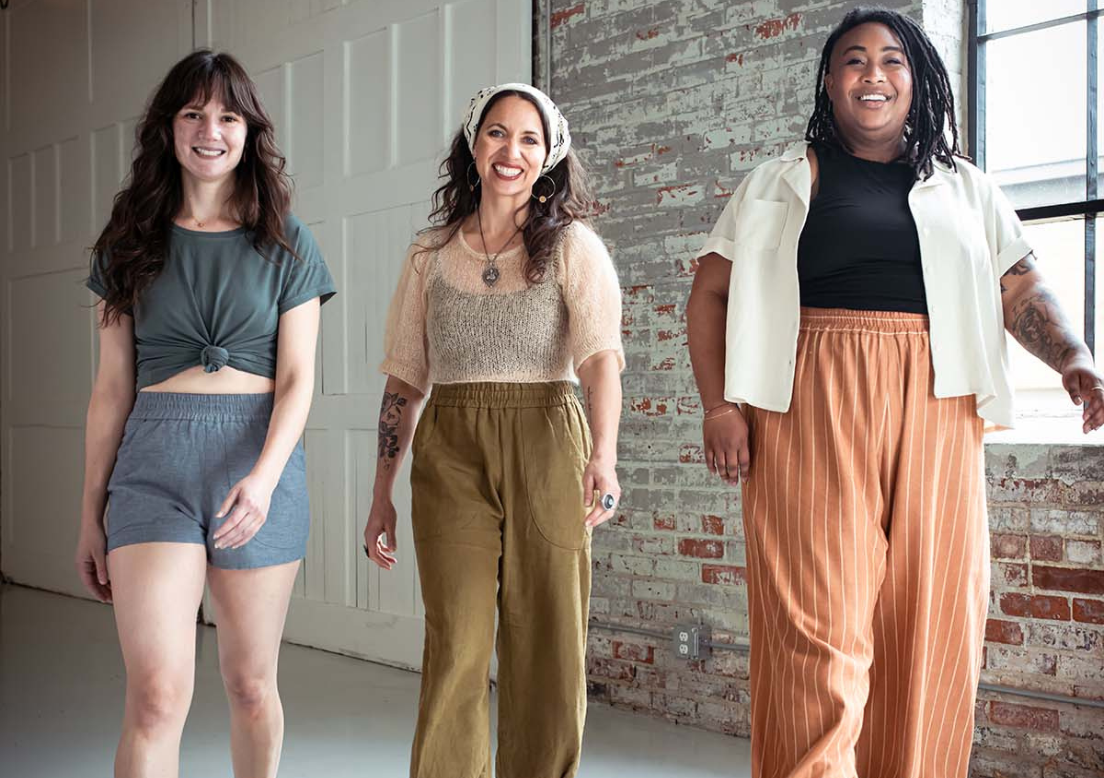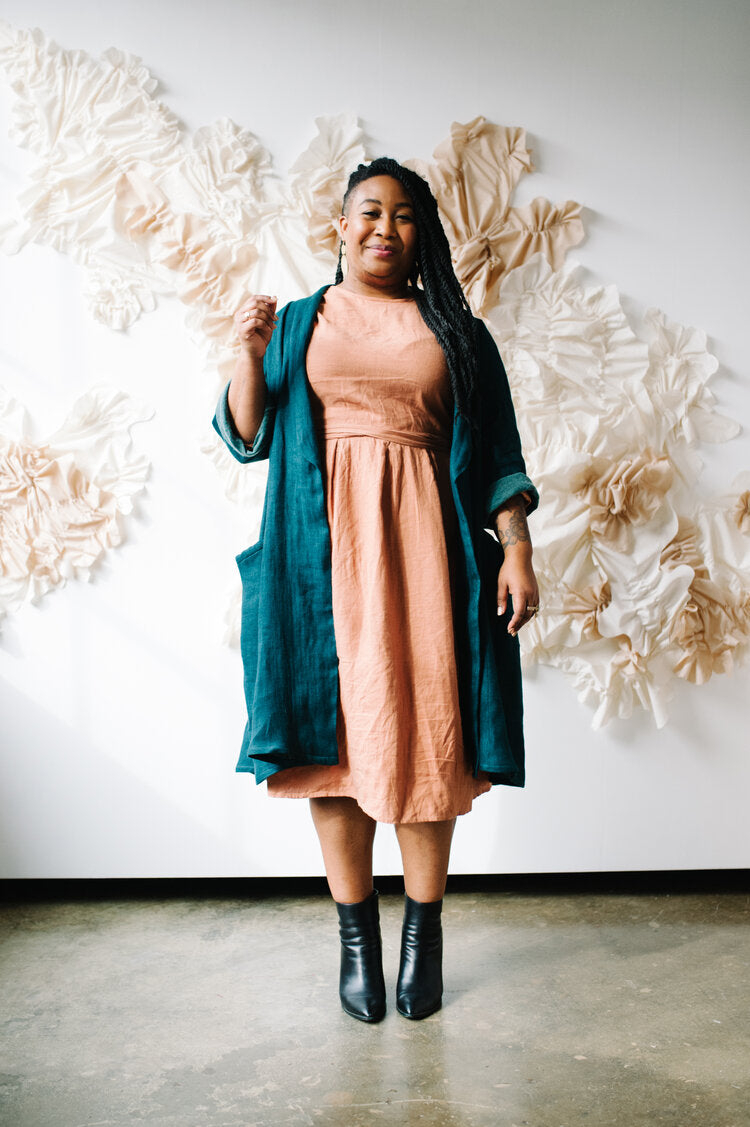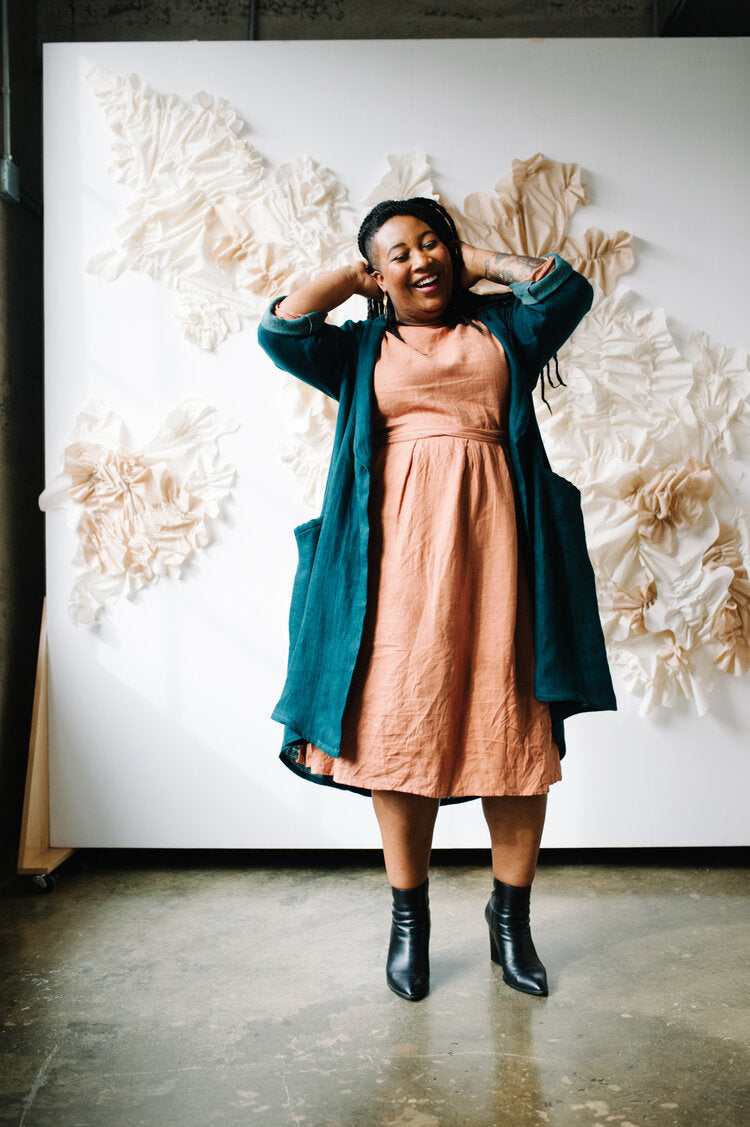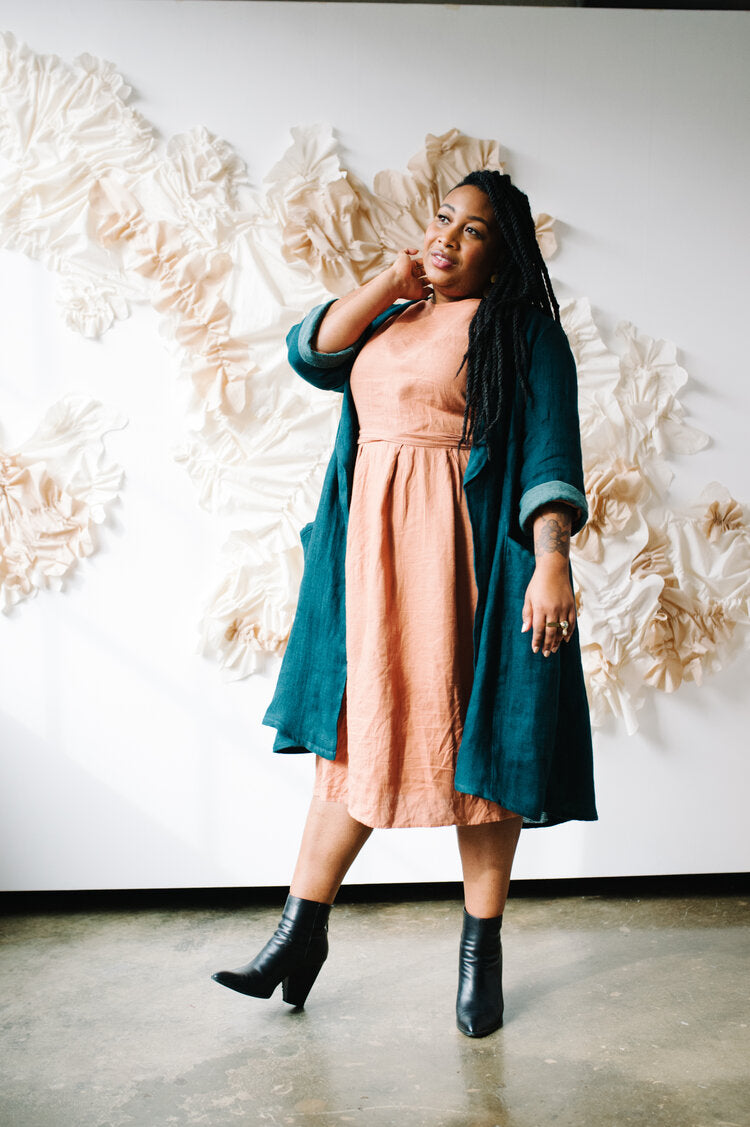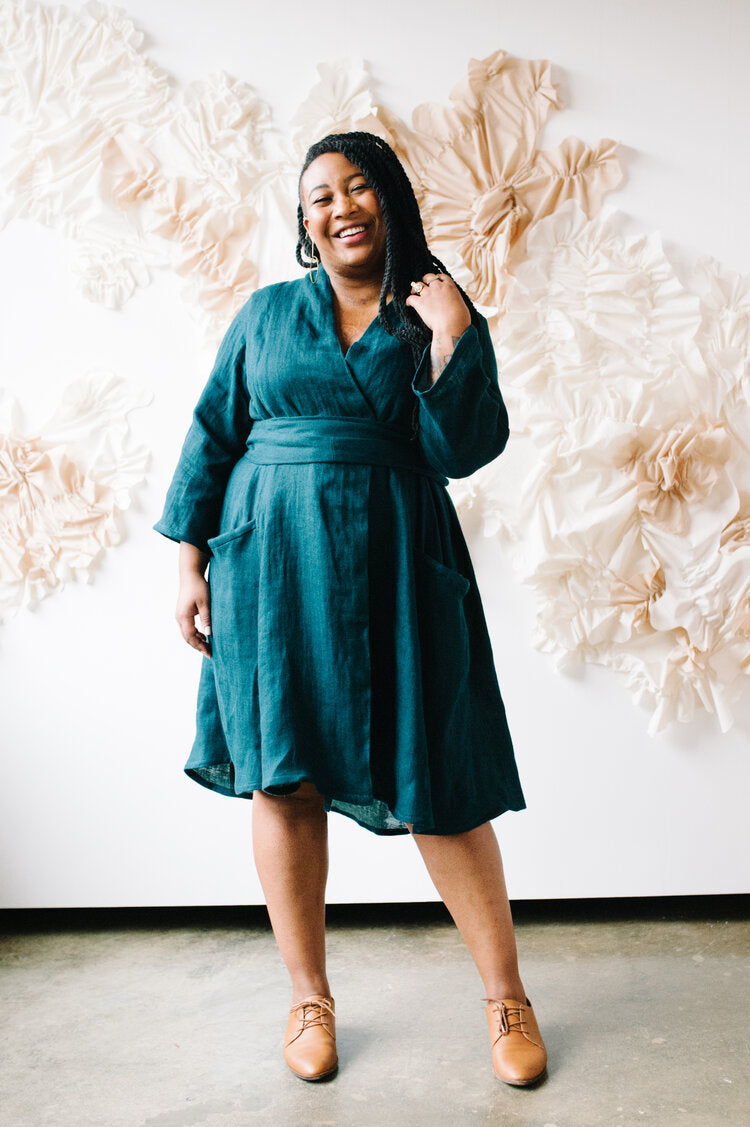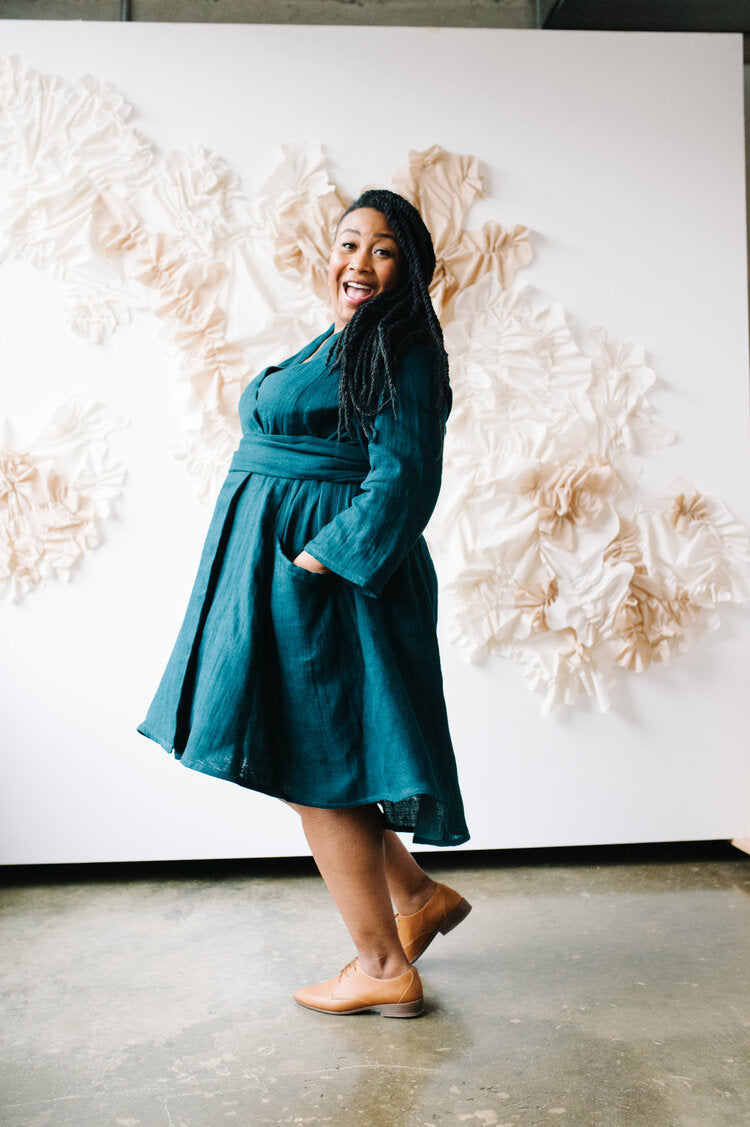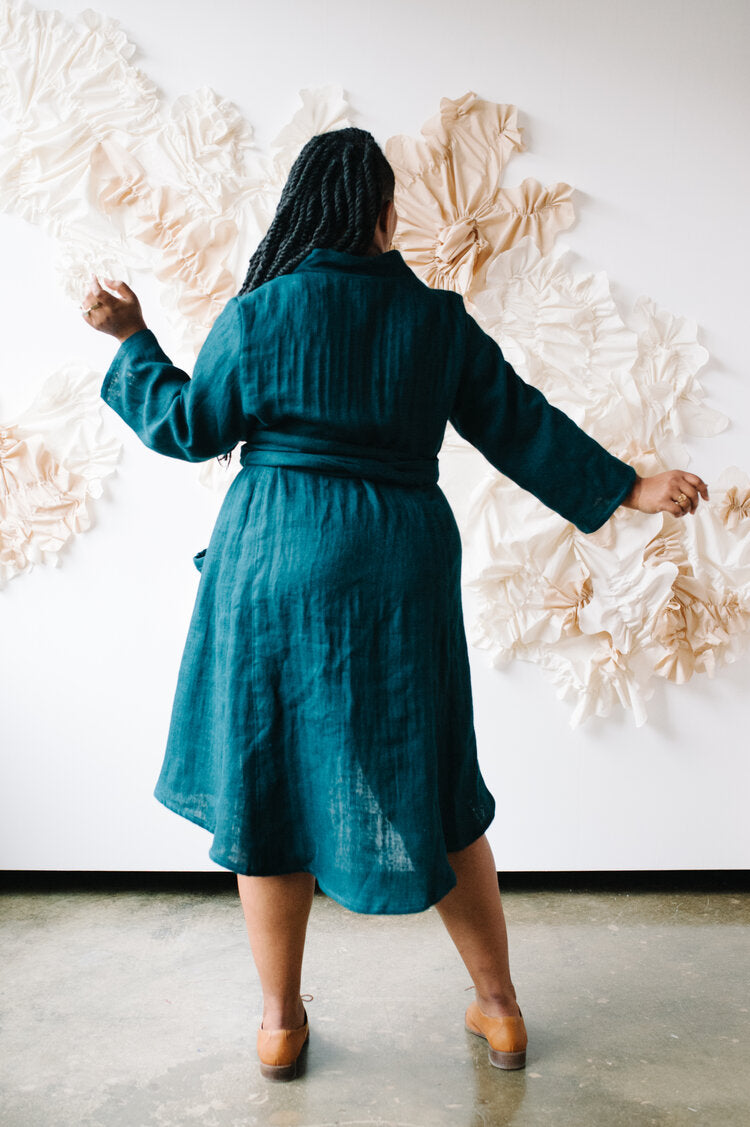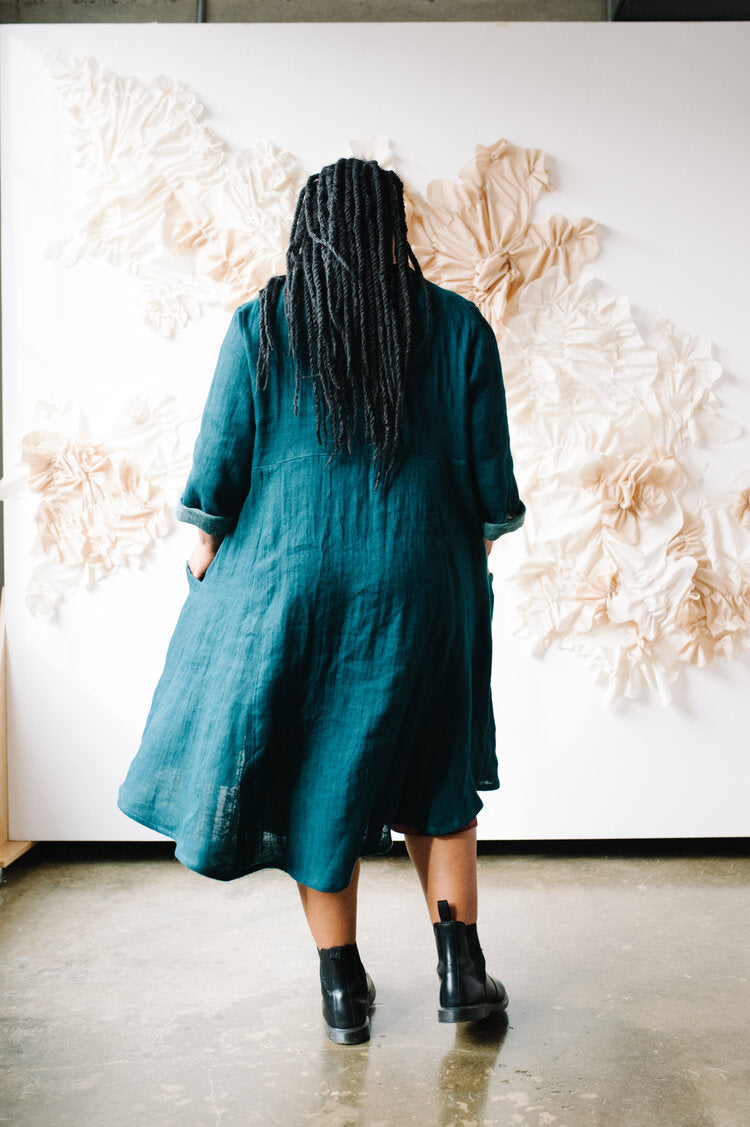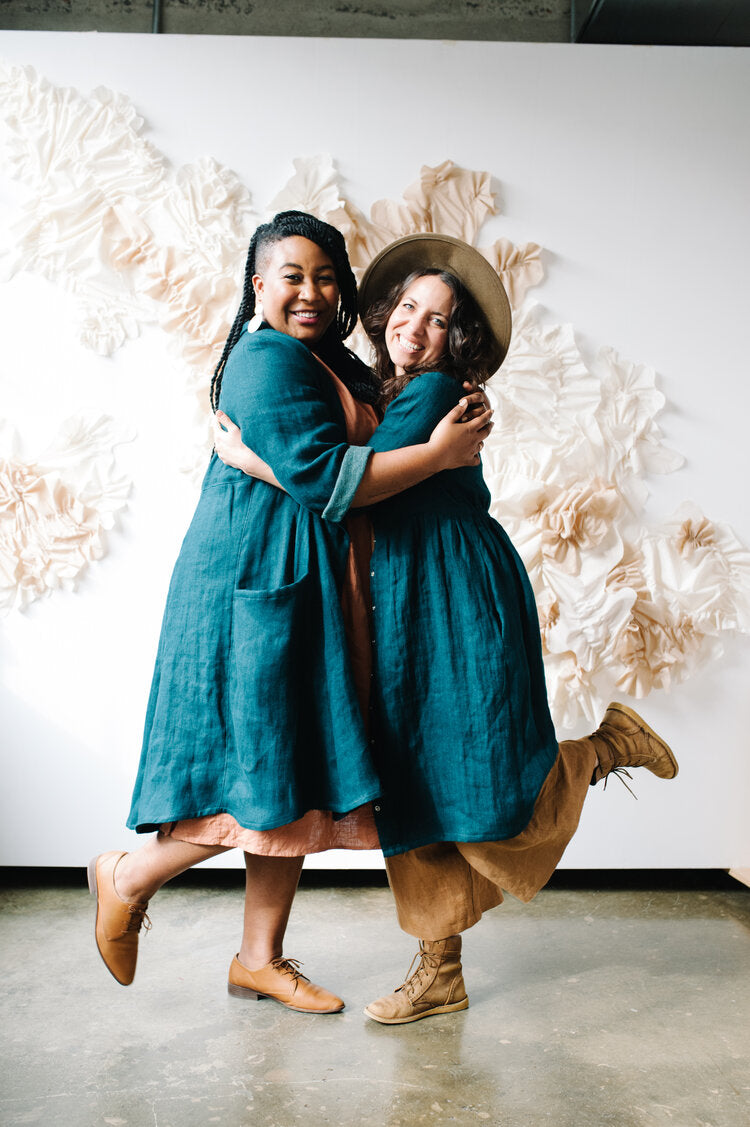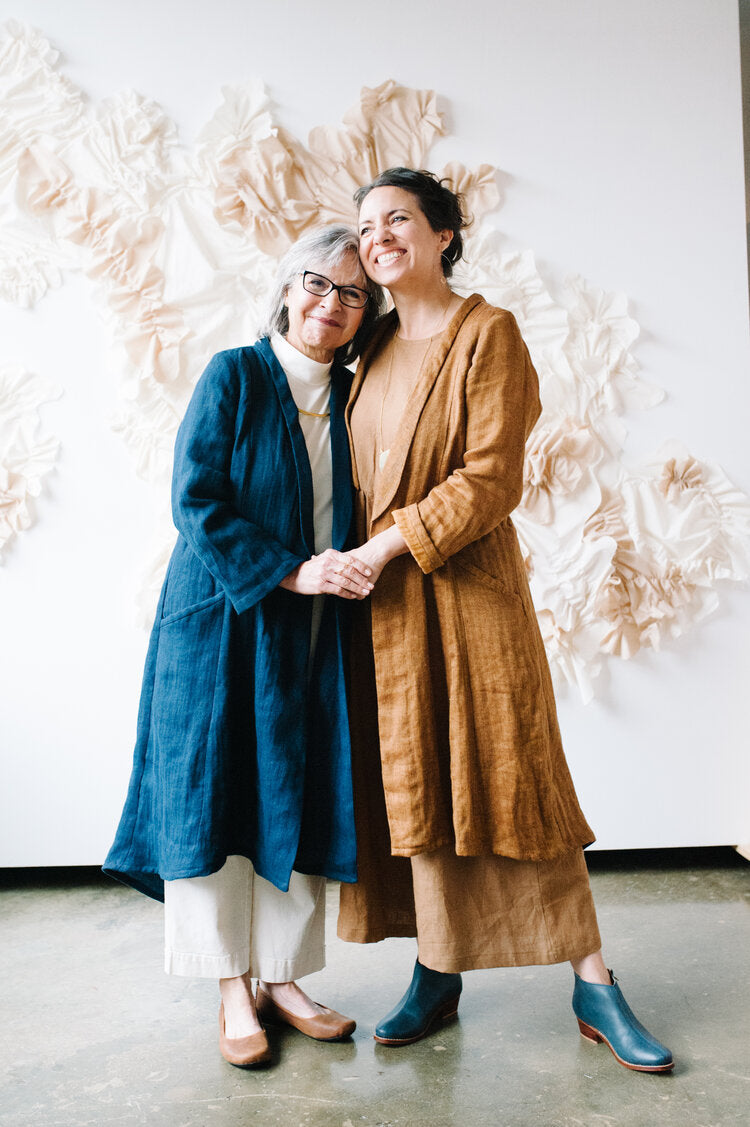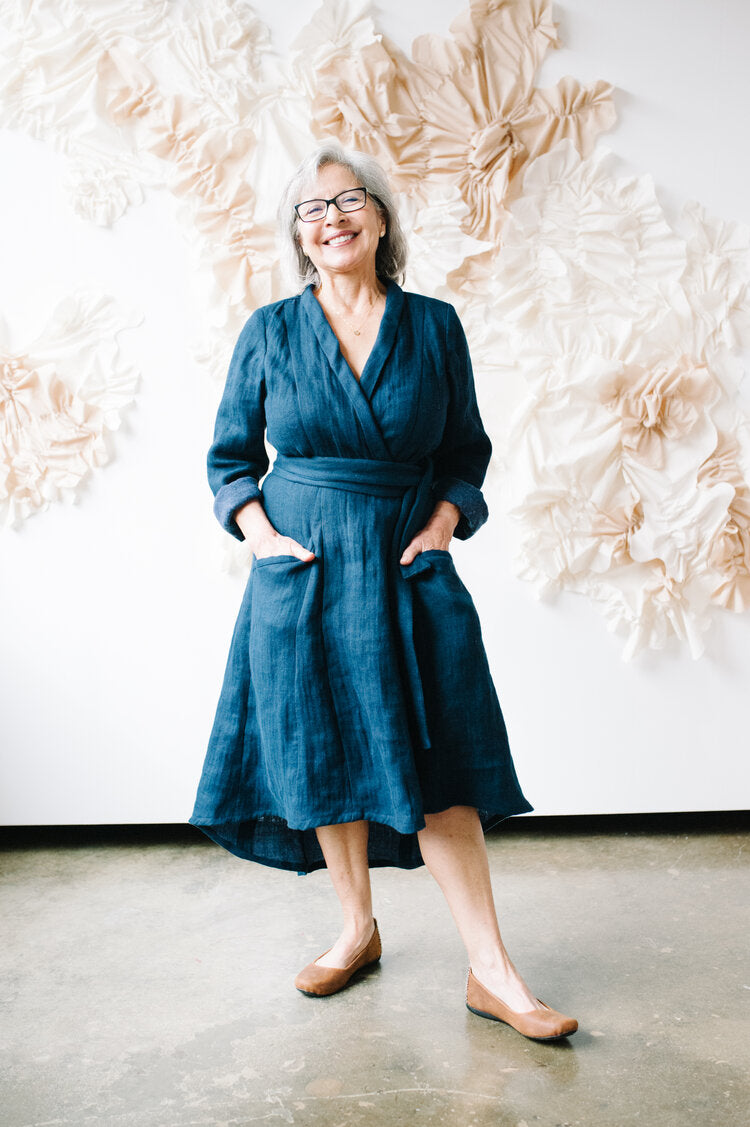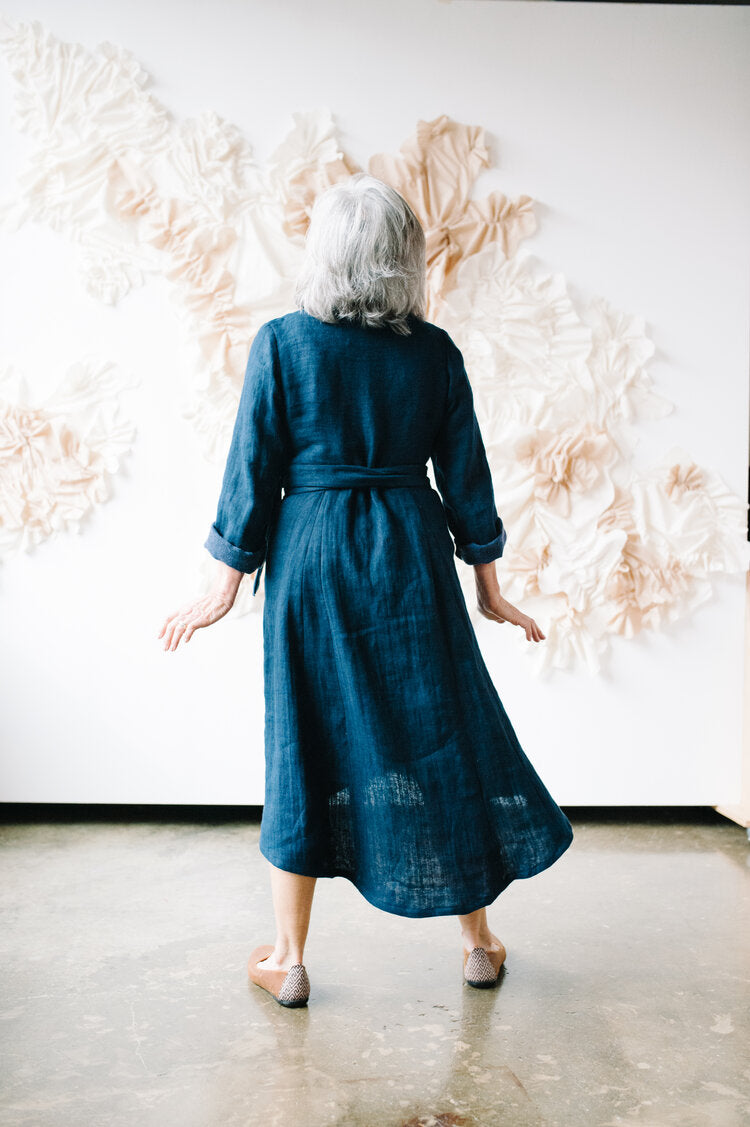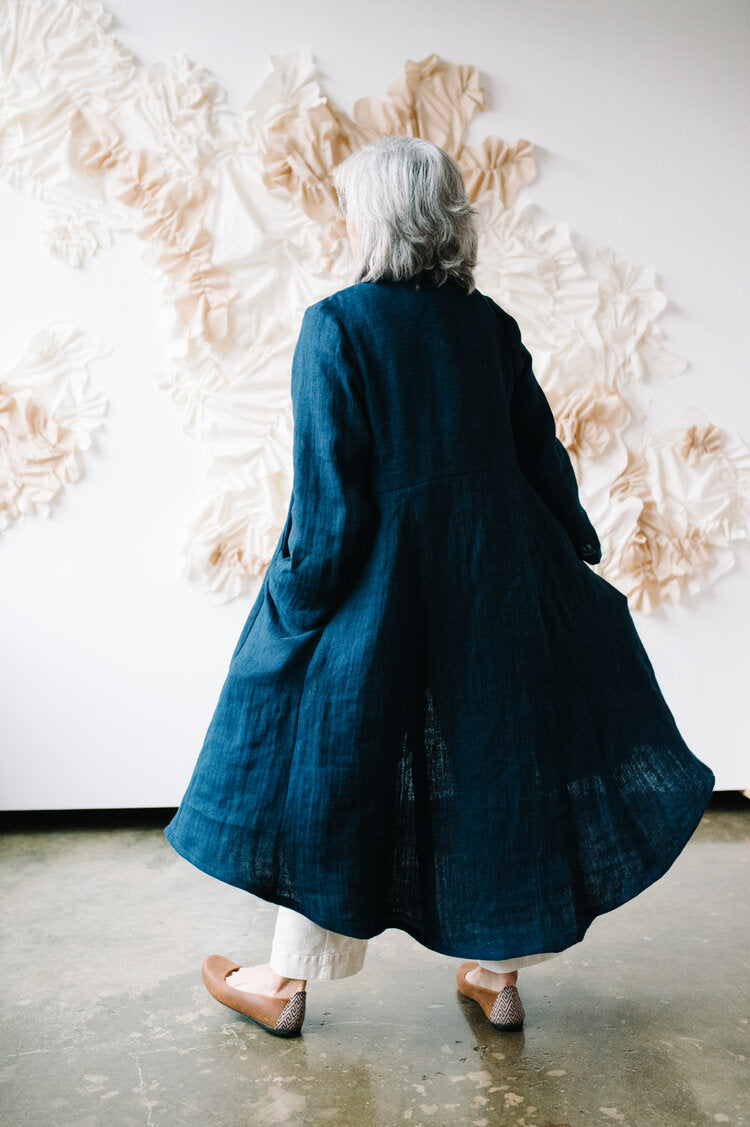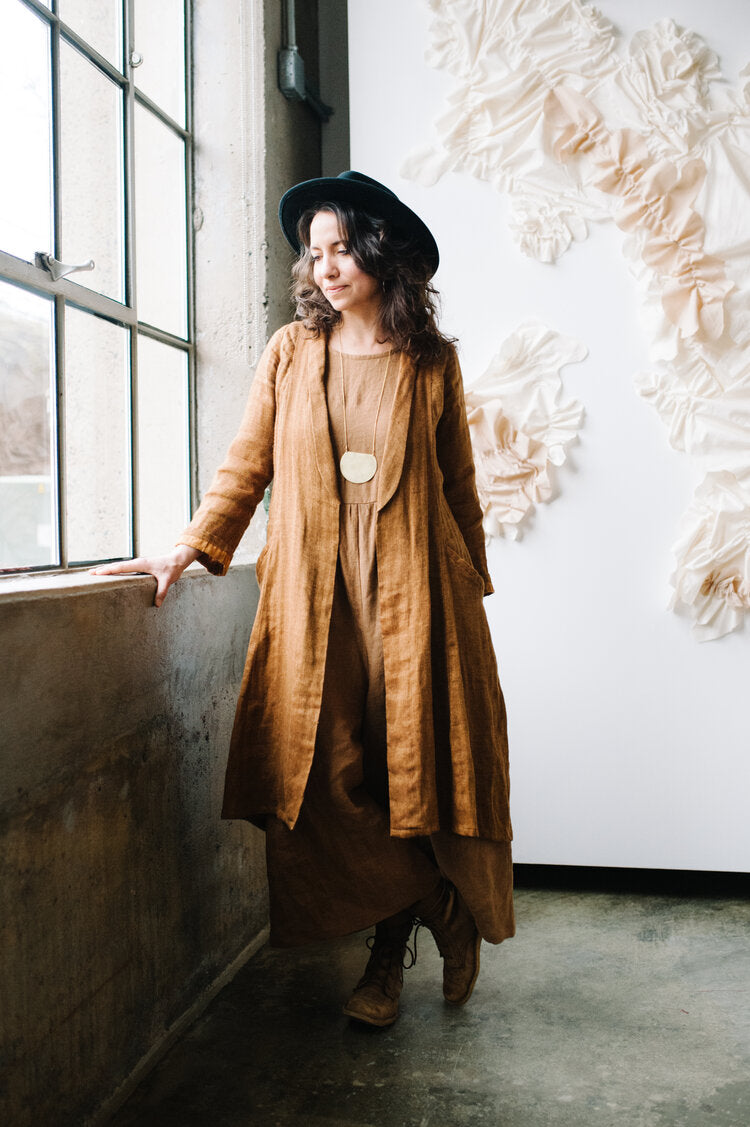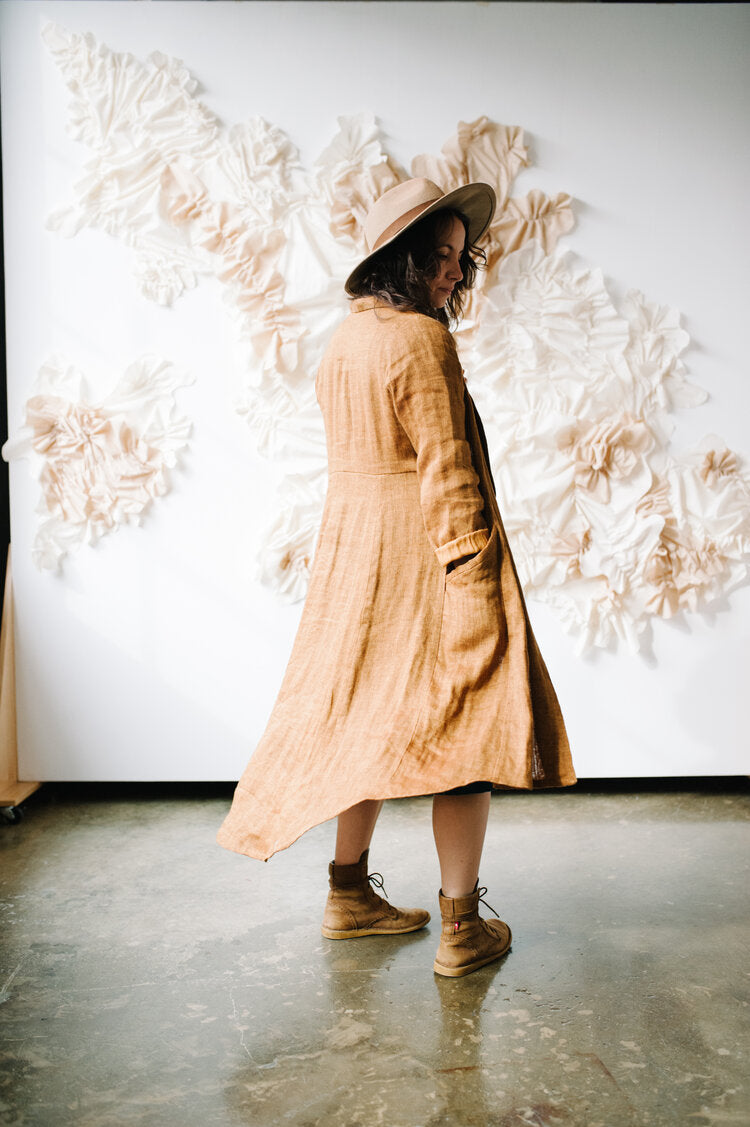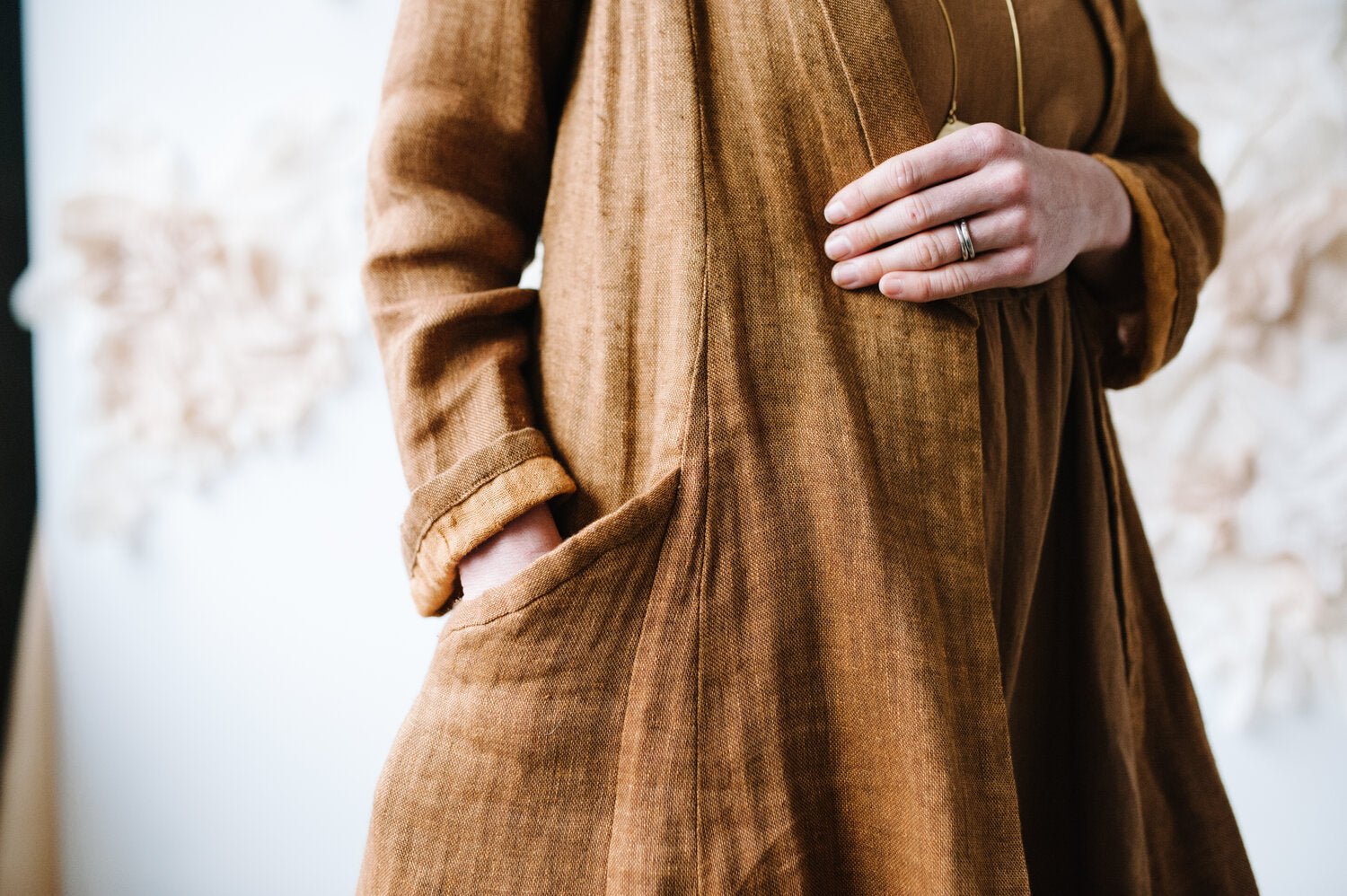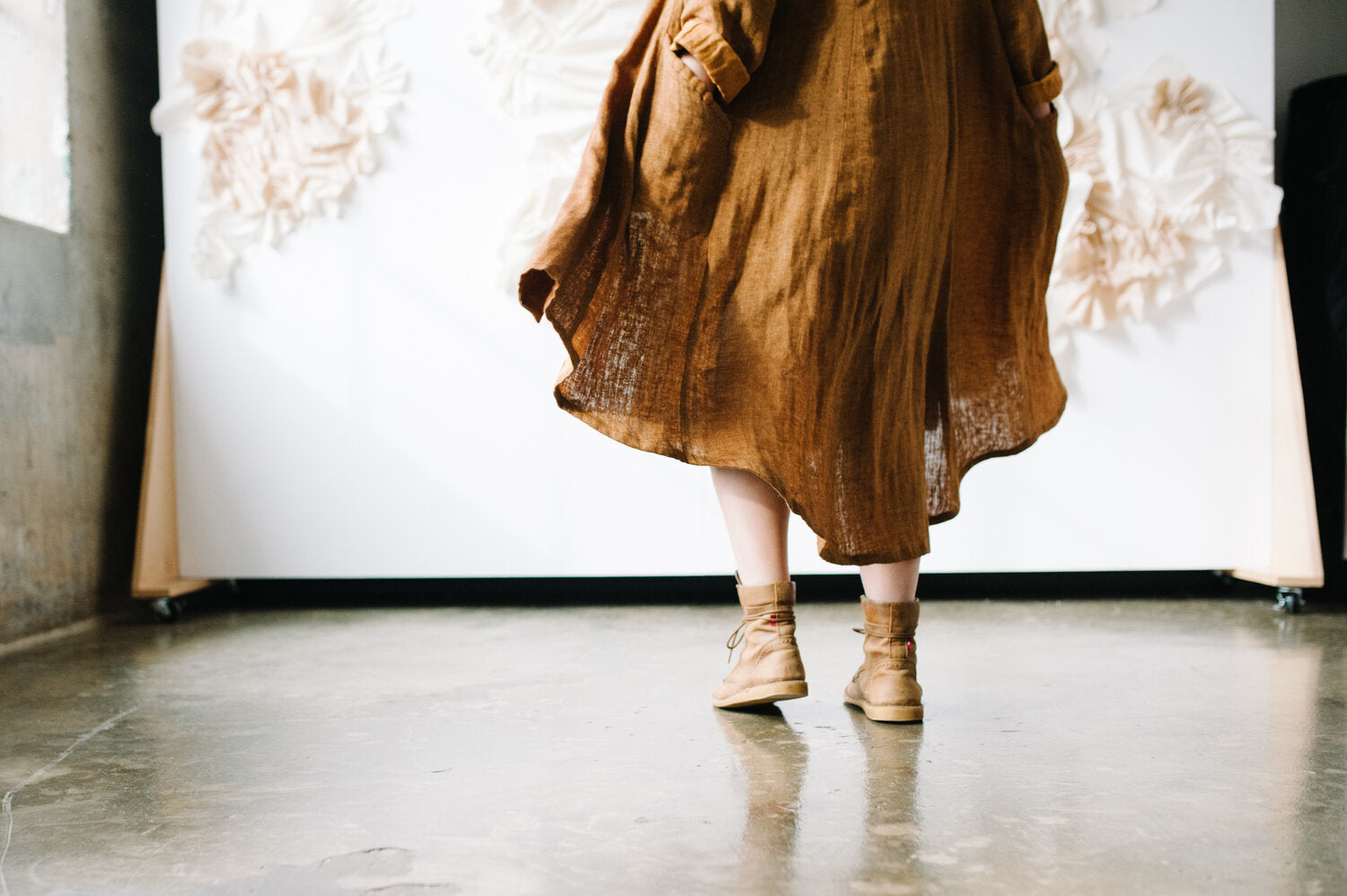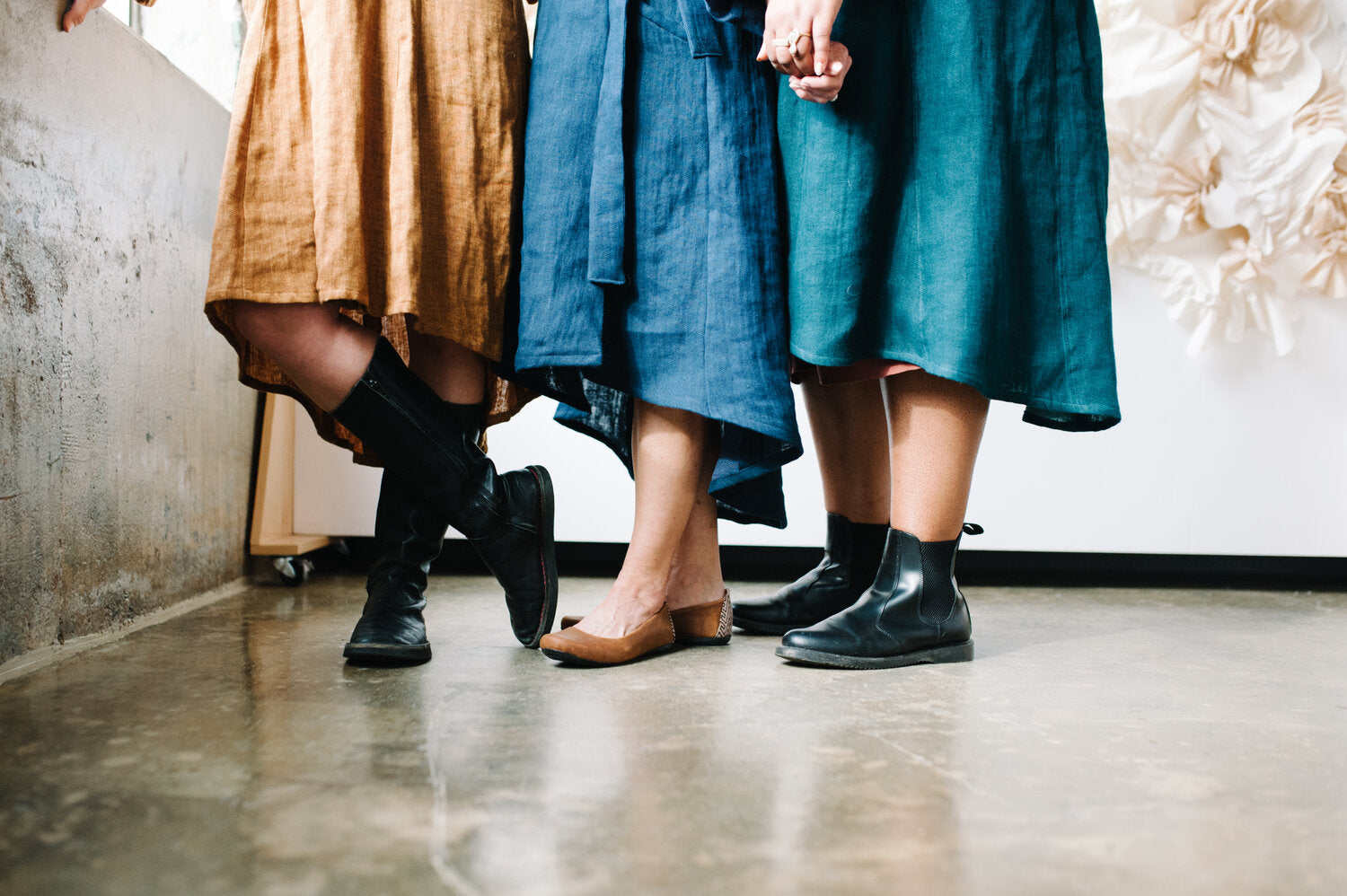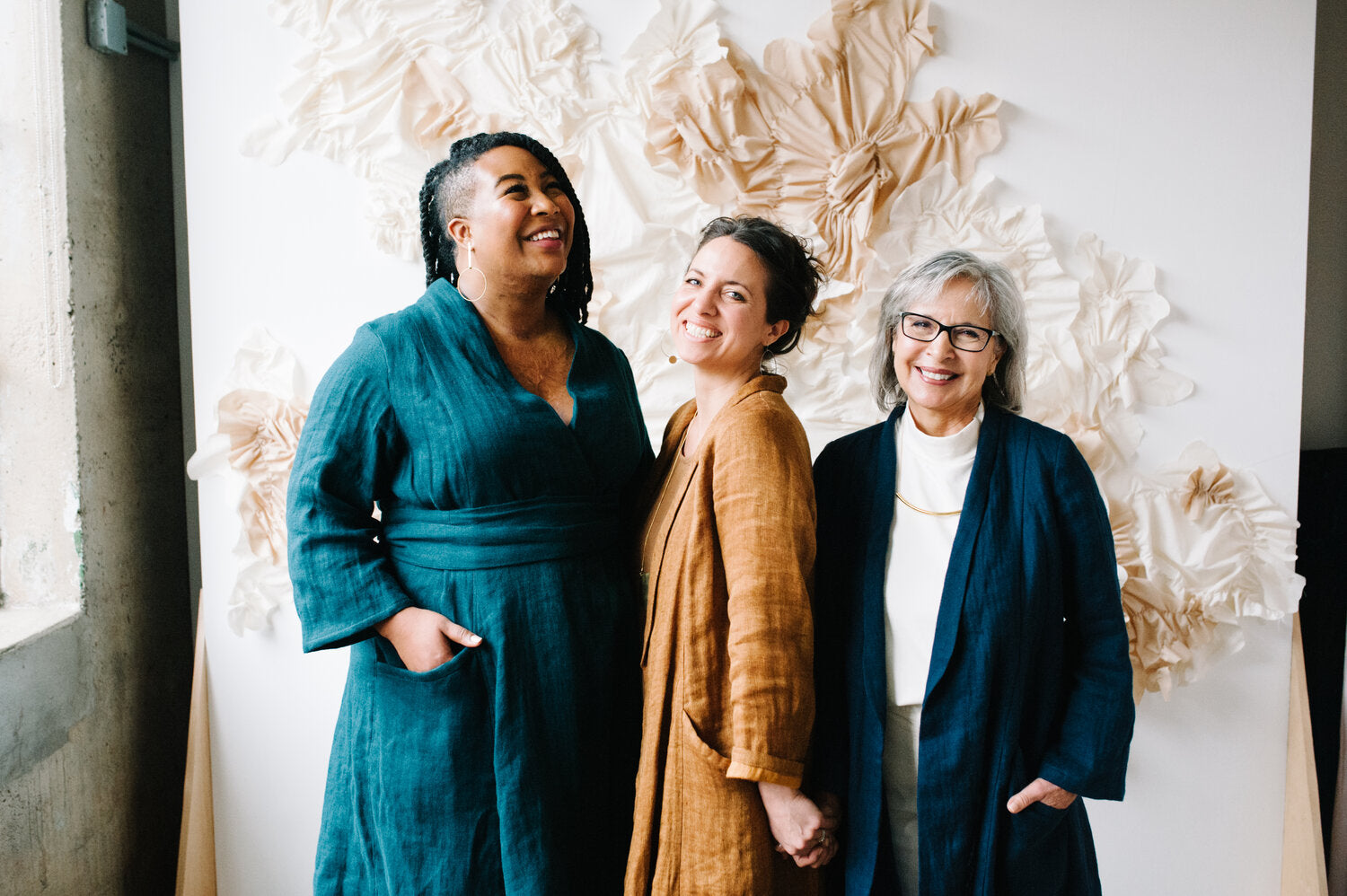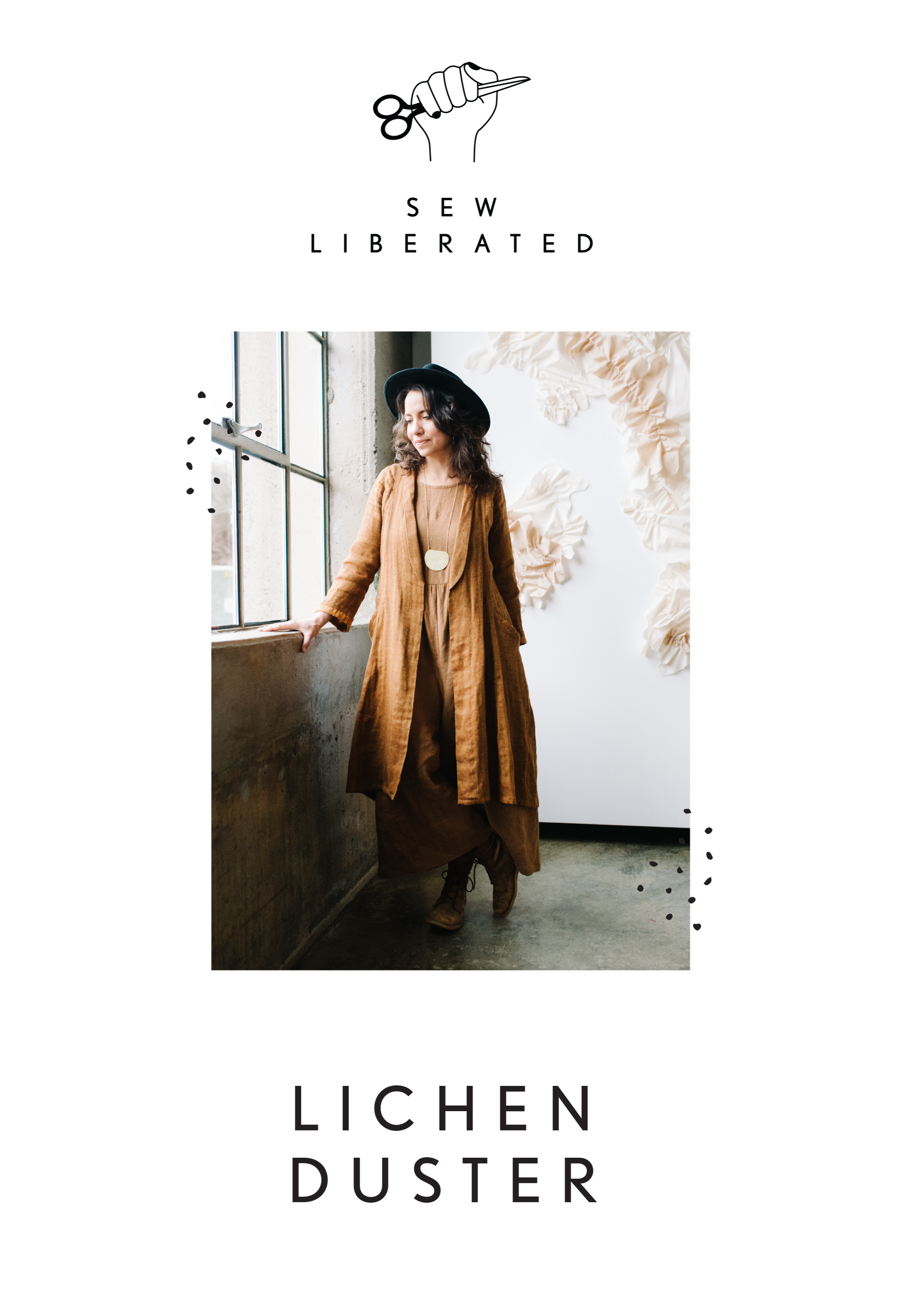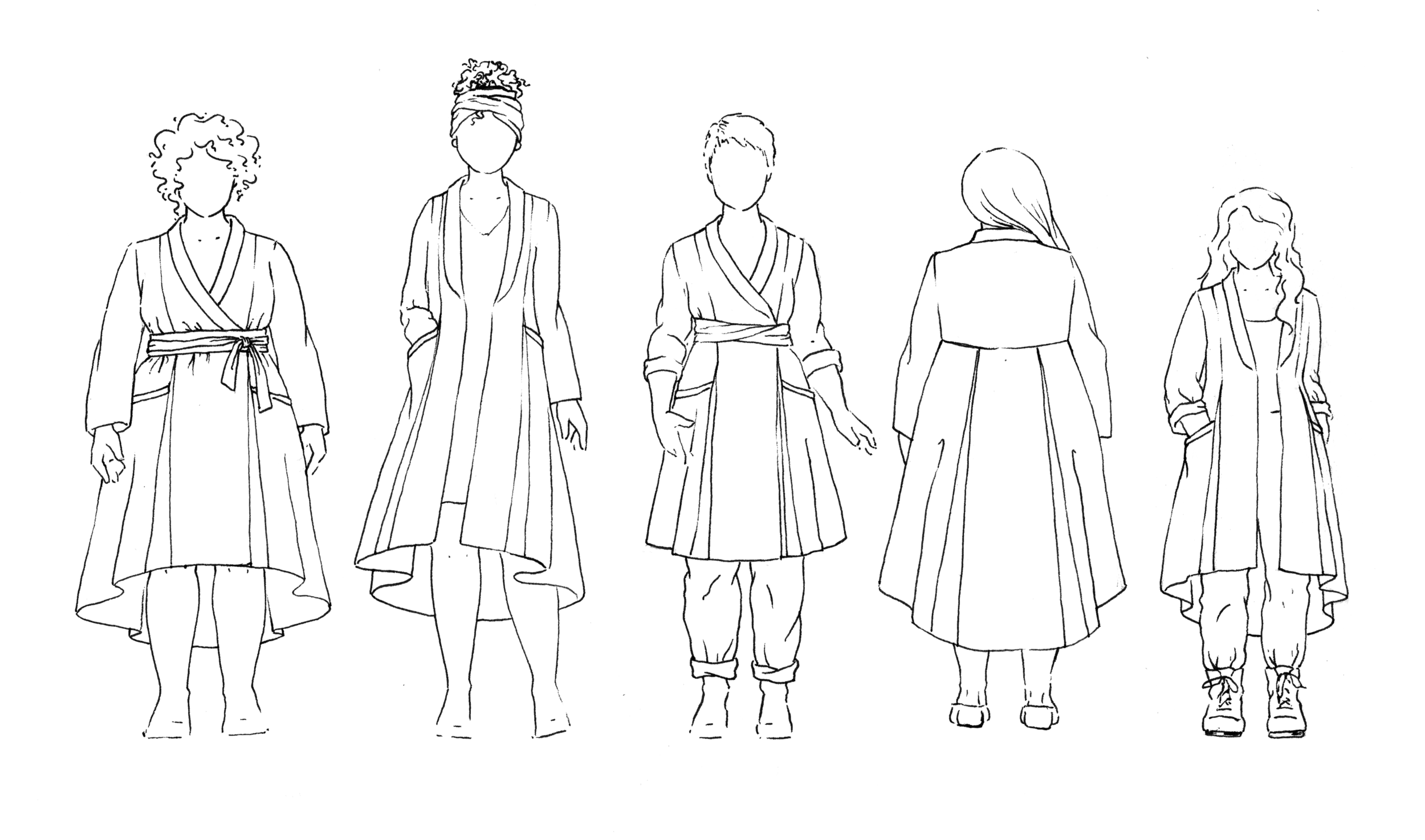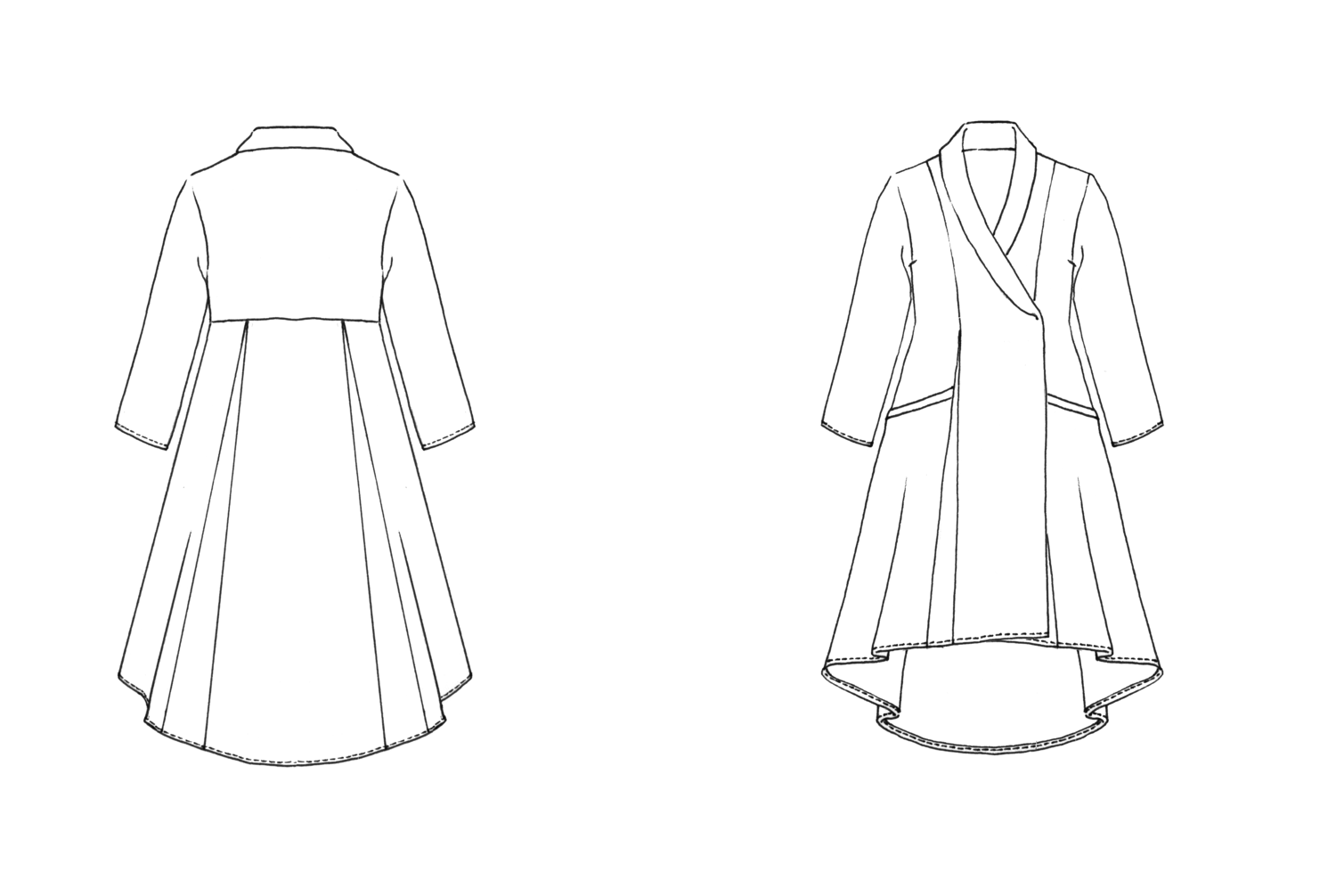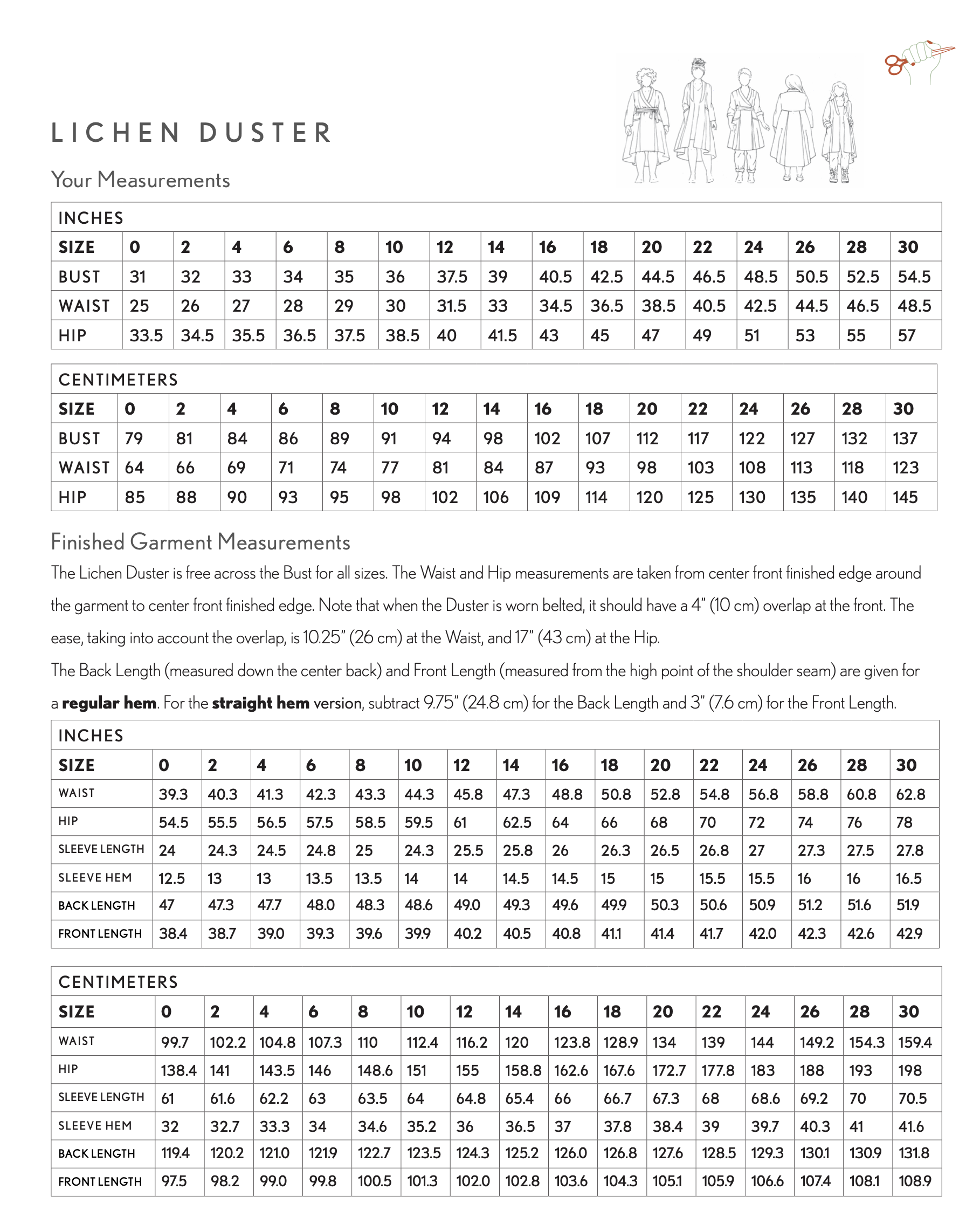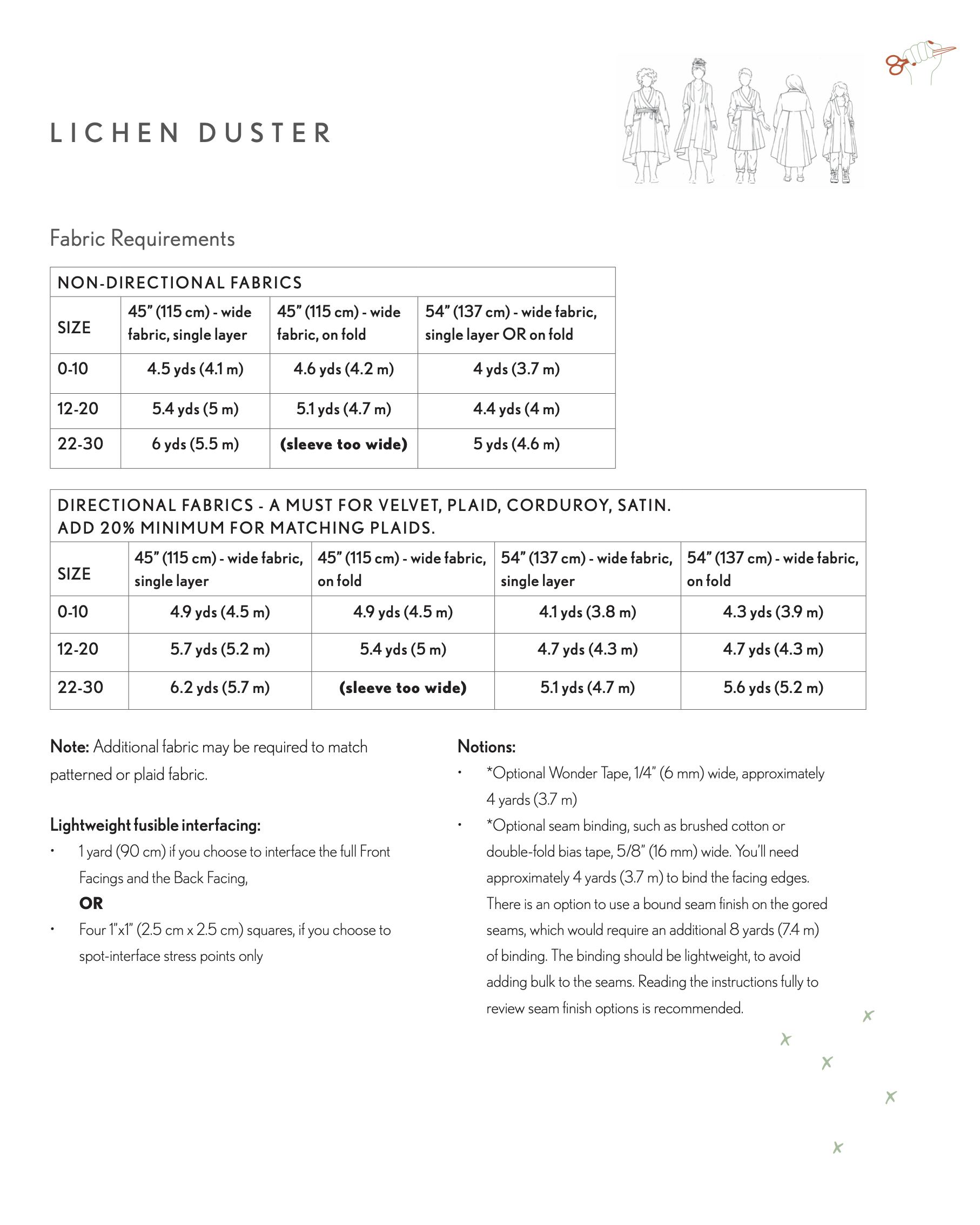Sew Liberated Lichen Duster
We print out the A0 pattern sheets, but you’ll need to download the digital instructions, as we don’t print these. The PDF files will be emailed immediately after purchase, and the printed A0 pattern sheets will be dispatched next working day.
Buy the Lichen Duster sewing pattern from Sew Liberated. The versatile Lichen Duster can be worn as a lightweight coat, wrap dress, or robe – a true capsule wardrobe workhorse! Its shawl collar, princess seams, unique pockets, four skirt gores and hand-stitched facings make it a beautiful heirloom piece. Style it over dresses and jumpsuits, or jeans and tees. Use your own belt or wrap the included fabric belt around your waist, tucking in the ends, for a chic morning-to-evening dress. The Lichen can be made with a sweeping high-low hem or a straight hem. Depending on the fabric you choose, the Lichen Duster can be worn in cold or warm weather. It is unlined, constructed with front and back facings of the same fabric.
This sewing pattern is available to buy in the following formats:
– PAPER (next working day dispatch on orders and FREE UK delivery over £50)
– PDF (available to download immediately after purchase). What is a PDF?
– PDF pattern + Printed A0 copy shop (We print out the A0 pattern sheets, but you’ll need to download the digital instructions, as we don’t print these. The PDF files will be emailed immediately after purchase, and the A0 pattern sheets will be dispatched next working day). What is Copy Shop?
Suggested fabrics: Mid-weight linen or yarn-dyed cotton for all-season wear. More advanced sewists can branch out and choose mid-weight wool or even silk or silk velvet.
Fabric requirements:
Non-directional fabrics: 45" (115 cm) wide fabric, single layer: 4.5 - 6 yd (4.1 - 5.5 m) // 45" (115 cm) wide fabric, on fold (sizes 0-20 only): 4.6 - 5.1 yd (4.2 - 4.7 m) // 54" (137 cm) wide fabric, single layer or on fold: 4 - 5 yd (3.7 - 4.6 m).
Directional fabrics (velvet, plaid, corduroy, satin): 45" (115 cm) wide fabric, single layer: 4.9 - 6.2 yd (4.5 - 5.7 m) // 45" (115 cm) wide fabric, on fold (sizes 0-20 only): 4.9 - 5.4 yd (4.5 - 5 m) // 54" (137 cm) wide fabric, single layer: 4.1 - 5.1 yd (3.8 - 4.7 m) // 54" (137 cm) wide fabric, on fold: 4.3 - 5.6 yd (3.9 - 5.2 m).
Additional fabric may be required to match patterned or plaid fabric - add 20% minimum for matching plaids.
Sizing: US 0 – 30 (approx. UK 6/8 – 28/30). Please check the size chart and finished garment measurements.
Notions: Lightweight fusible interfacing, 1 yd (90 cm) if you choose to interface the full front facings and the back facing OR four 1" x 1" (2.5 cm x 2.5 cm) squares if you choose to spot-interface stress points only // Optional: Wonder Tape, 1/4" (6 mm) wide, approx. 4 yd (3.7 m); seam binding, such as brushed cotton or double-fold bias tape, 5/8" (16 mm) wide, approx. 4 yd (3.7 m) to bind the facing edges, an additional 8 yd (7.4 m) to bind the gored seams.
PDF pattern includes: Instructions; US letter/A4 print-at-home pattern (66 pages); A0 copy shop pattern (3 sheets); US copy shop pattern (36" x 125") // Layers: Yes // Projector file: No.
If you’re looking for more maker inspiration, check out the latest sewing pattern reviews from the sewing community. We also have a sewing blog to keep you up to date with all the news from the world of sewing.
If you’re looking for maker inspiration check out our blog. With weekly updates on new patterns, styling ideas and maker inspiration, it's not to be missed.
Cart
Your cart is empty
Spend another £50.00 and get free shipping!
